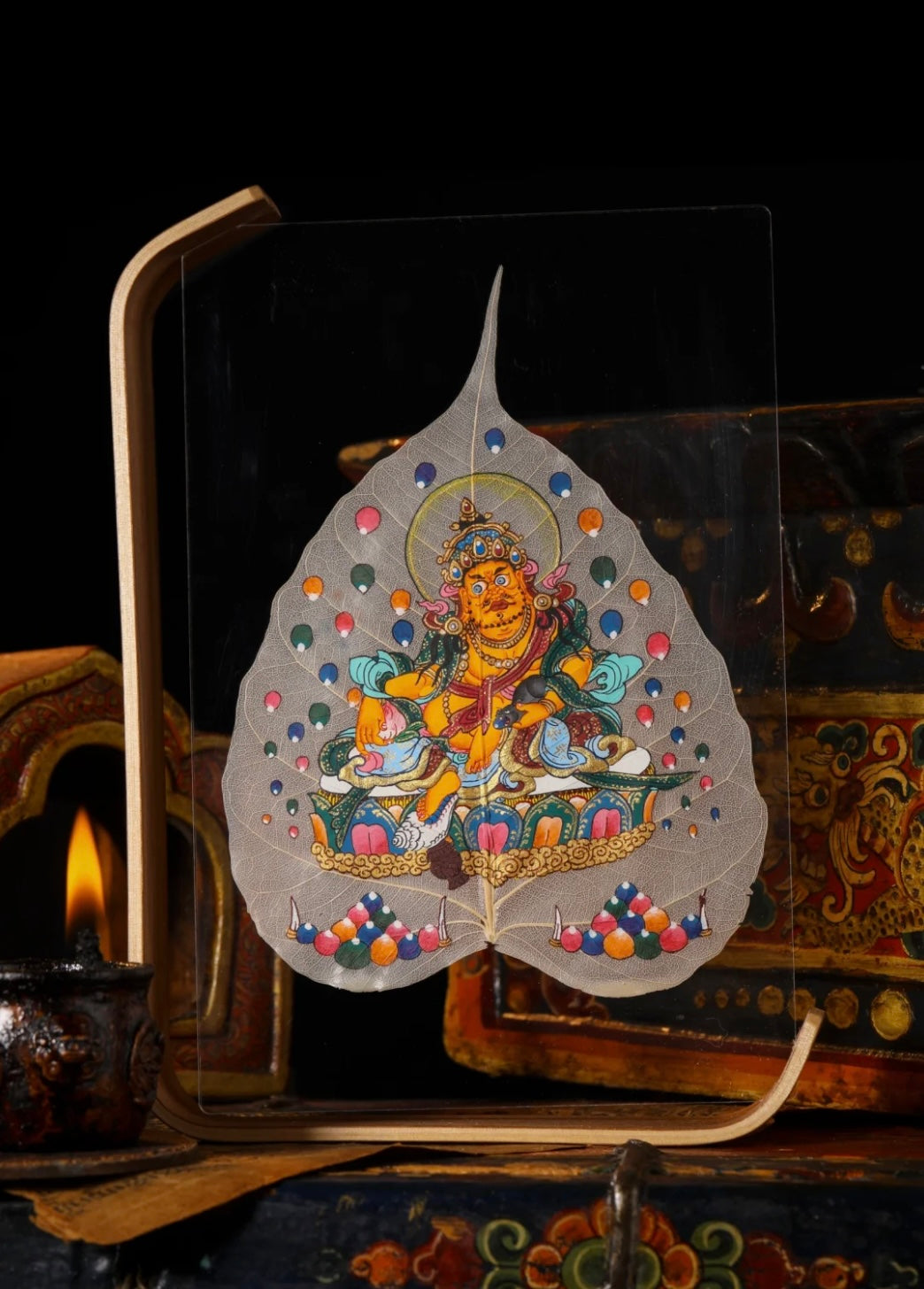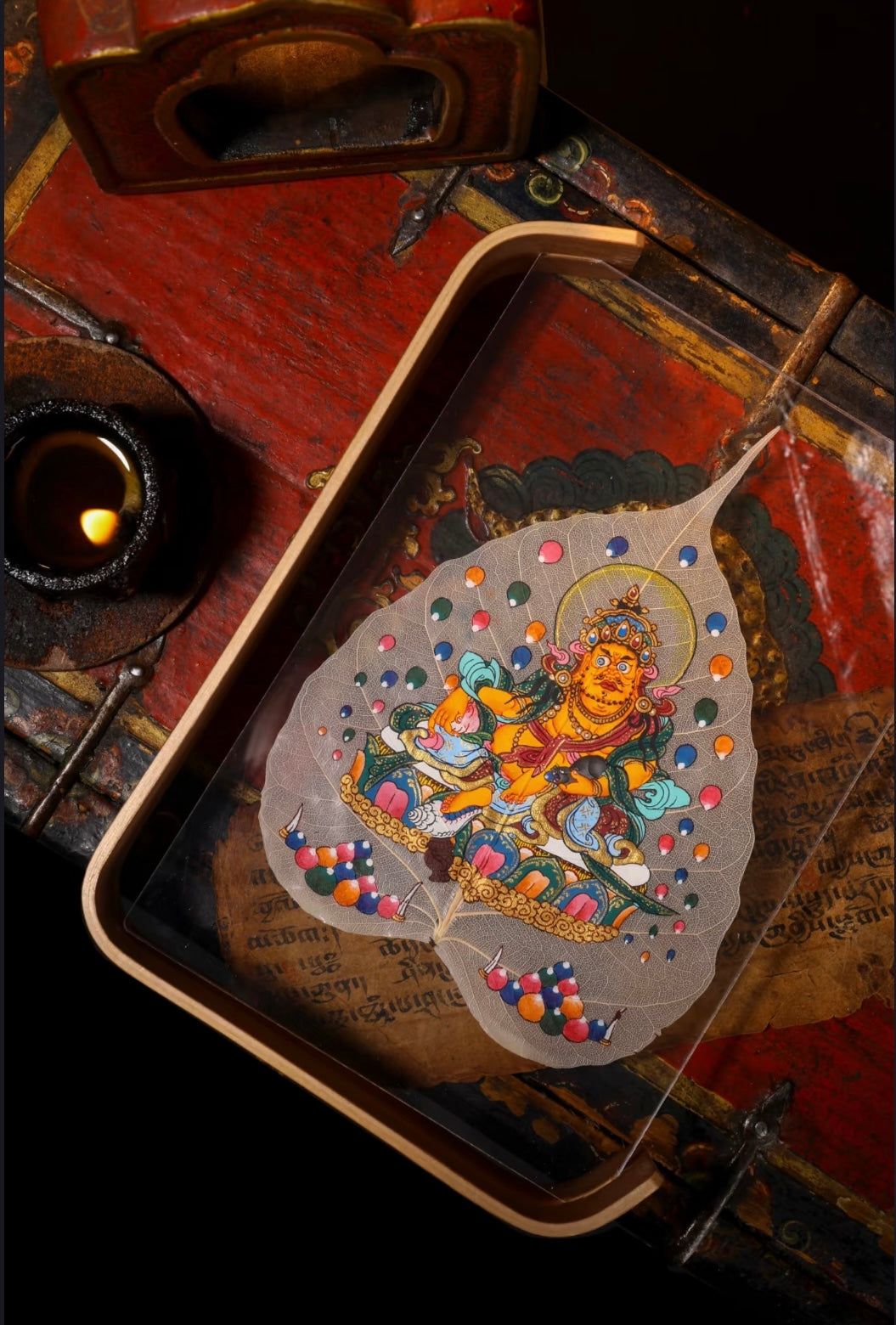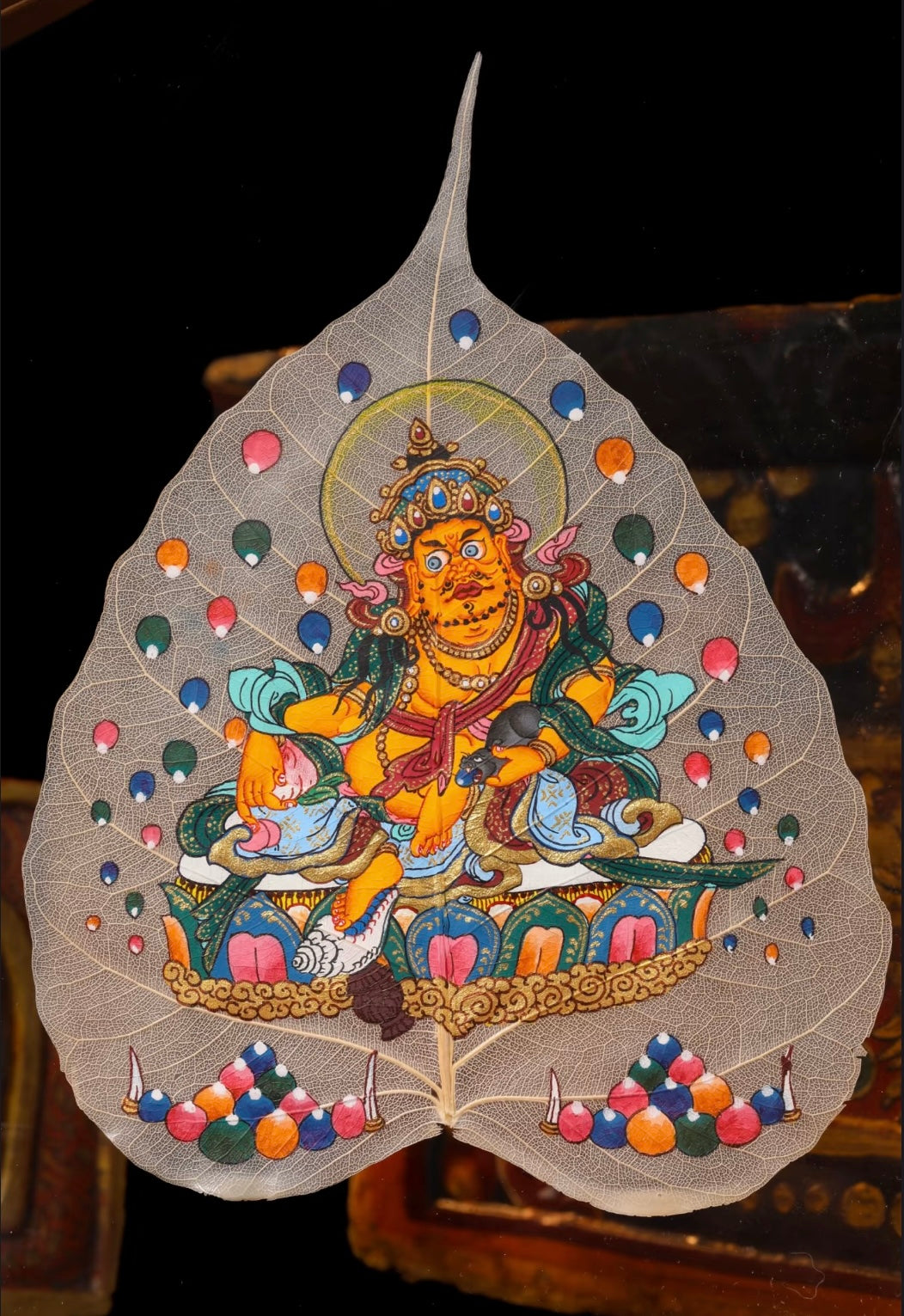samsaraenergy
Sacred Tibetan Yellow Jambhala Bodhi Leaf Altar Piece
Sacred Tibetan Yellow Jambhala Bodhi Leaf Altar Piece
Couldn't load pickup availability
Sacred Tibetan Yellow Jambhala Bodhi Leaf Altar Piece
Crafted from nature’s divine blueprint, this rare altar piece merges the spiritual essence of hand-picked Bodhi leaves—sacred symbols of enlightenment—with the eternal power of Tibetan mineral pigments. Each leaf, kissed by Himalayan winds, is transformed by master artisans into a golden canvas for Yellow Jambhala, the Dharma Protector of Wealth.
Stroked in 24K gold and blessed vermilion, the deity’s form radiates prosperity magnetism, said to activate cosmic abundance. The Bodhi’s veins, infused with earth’s primal energy, form a spiritual circuit to amplify wealth flow and anchor career success.
More than art, this relic channels ancient tantric rites—its mineral hues vibrate with unbroken lineage mantras. Place it in workspaces or wealth corners to ignite a "golden matrix," dissolving financial obstacles and manifesting opportunities.
A living bridge between mortal and divine, only 108 exist—each consecrated to awaken Jambhala’s miracle-working vows. Let this sacred vortex of fortune redefine your destiny.
Share



-

Tibetan Thangka Art
A Symphony of Natural Pigments
Tibetan thangka, a sacred Buddhist scroll painting, is renowned for its intricate details and vibrant hues, achieved through the use of unique natural pigments. Unlike conventional paints, thangka artists rely on minerals, plants, and precious metals sourced from the Himalayas, ensuring both aesthetic brilliance and spiritual resonance.
Mineral pigments form the backbone of thangka colors. Grinding stones like malachite (green), lapis lazuli (blue), and cinnabar (red) into fine powders, artists mix them with natural binders like yak glue and water. Gold and silver, often applied as leaf or powder, add divine luminosity to deities' halos and robes. Organic dyes from saffron, indigo, or rhubarb root create softer tones, while white hues may derive from crushed conch shells. Even semi-precious stones like coral or turquoise are occasionally incorporated.
These pigments are labor-intensive to prepare but yield unparalleled depth and durability. Their radiant, unyielding colors symbolize the eternal nature of Buddhist teachings. Today, while synthetic alternatives exist, traditional masters uphold ancient recipes, believing natural materials carry sacred energy essential to thangka's spiritual function. This devotion to organic pigments preserves a living bridge between art, ecology, and faith.




